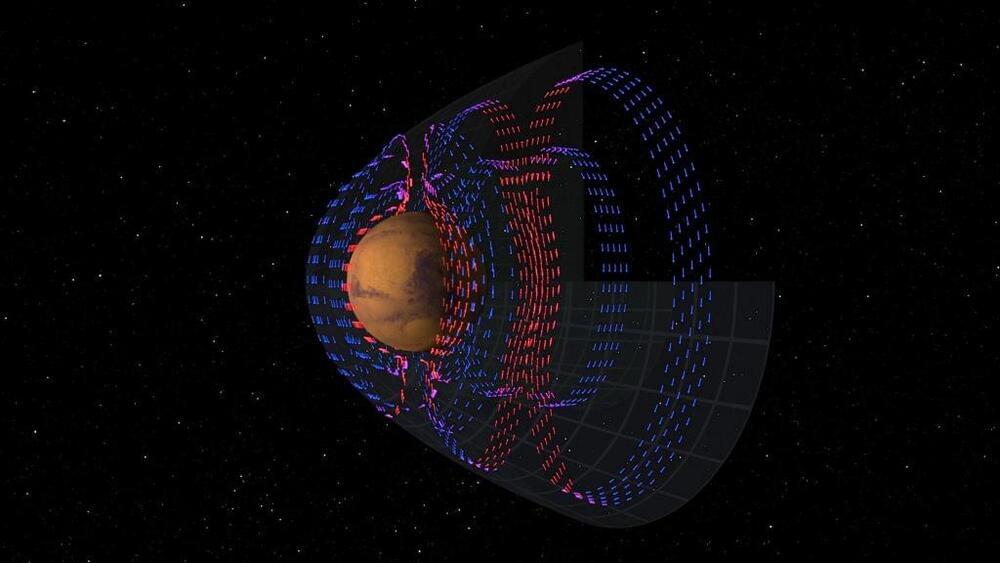Light is fast. In fact, it is the fastest thing that exists, and a law of the universe is that nothing can move faster than light.



Eliminating old, dysfunctional cells in human fat also alleviates signs of diabetes, researchers from UConn Health report. The discovery could lead to new treatments for Type 2 diabetes and other metabolic diseases.
The cells in your body are constantly renewing themselves, with older cells aging and dying as new ones are being born. But sometimes that process goes awry. Occasionally damaged cells linger. Called senescent cells, they hang around, acting as a bad influence on other cells nearby. Their bad influence changes how the neighboring cells handle sugars or proteins and so causes metabolic problems.
Type 2 diabetes is the most common metabolic disease in the US. About 34 million people, or one out of every 10 inhabitants of the US, suffers from it, according to the Centers for Disease Control and Prevention (CDC). Most people with diabetes have insulin resistance, which is associated with obesity, lack of exercise and poor diet. But it also has a lot to do with senescent cells in people’s body fat, according to new findings by UConn Health School of Medicine’s Ming Xu and colleagues. And clearing away those senescent cells seems to stop diabetic behavior in obese mice, they report in the 22 November issue of Cell Metabolism. Ming Xu, assistant professor in the UConn Center on Aging and the department of Genetics and Genome Sciences at UConn Health, led the research, along with UConn Health researchers Lichao Wang and Binsheng Wang as major contributors. Alleviating the negative effects of fat on metabolism was a dramatic result, the researchers said.


US President Biden, Vice President Kamala Harris, and members of the current administration who are seemingly refusing even to mention the word “Tesla” may soon find their online presence saturated with the EV maker’s name. This was after Tesla CEO Elon Musk poked fun at the Biden administration’s tendency to completely ignore Tesla’s existence or accomplishments during public appearances and on social media.
Last week, the online electric vehicle community was aghast after US President Joe Biden visited General Motors’ Factory Zero in Detroit, Michigan. While speaking to the audience, Biden patted GM CEO Mary Barra’s back, stating that the executive was leading the auto sector’s transition to electric vehicles. “You electrified the entire automotive industry. I’m serious. You led, and it matters,” Biden said. The US President doubled down on this sentiment with a series of posts on Twitter, stating that the future of the US is electric.
Biden’s sentiments were later echoed by VP Kamala Harris, who also noted that the United States would be building electric vehicles, including the batteries and parts that go in them, instead of relying on other countries. Just like the President, she also noted that the “future will be made in America.” This resulted in numerous netizens poking fun at the Vice President, stating that the future is already being made in America by Tesla — for over a decade. Other Twitter users further joked that Harris might have simply never seen a Tesla, despite serving as California’s attorney general from 2011 to 2017.
Miso Robotics’ Flippy 2 Robot promises to be the first household robot that any person or small buisness could buy to help prepare and make food inside of a kitchen without any big changes having to be made. This looks like it could be the first glimpse into a future in which robots help us inside of our homes.
–
Daily Futurology News: https://futurology.id.
–
TIMESTAMPS:
00:00 Finally a real Robot Assistant.
01:34 Their new & improved Robot (Flippy 2)
03:52 Are Household Robots the future?
06:59 When can we expect our own Robots?
09:06 Last Words.
–
#robotics #future #ai


Terraforming Mars is one of the great dreams of humanity. Mars has a lot going for it. Its day is about the same length as Earth’s, it has plenty of frozen water just under its surface, and it likely could be given a reasonably breathable atmosphere in time. But one of the things it lacks is a strong magnetic field. So if we want to make Mars a second Earth, we’ll have to give it an artificial one.
The reason magnetic fields are so important is that they can shield a planet from solar wind and ionizing particles. Earth’s magnetic field prevents most high-energy charged particles from reaching the surface. Instead, they are deflected from Earth, keeping us safe. The magnetic field also helps prevent solar winds from stripping Earth’s atmosphere over time. Early Mars had a thick, water-rich atmosphere, but it was gradually depleted without the protection of a strong magnetic field.
Unfortunately, we can’t just recreate Earth’s magnetic field on Mars. Our field is generated by a dynamo effect in Earth’s core, where the convection of iron alloys generates Earth’s geomagnetic field. The interior of Mars is smaller and cooler, and we can’t simply “start it up” to create a magnetic dynamo. But there are a few ways we can create an artificial magnetic field, as a recent study shows.


Learn More.
Bright Side.
Something bizarre found on the Moon has scientists speechless.
Find out how much good is going on in the world.
Our site is dedicated to creativity. We made Bright Side to help nurture the seeds of creativity found in all of us. We believe imagination should be at the heart of everything people do. Bright Side is the place to find the most inspiring manifestations of this from around the world.

Superconductivity occurs when electrons in a metal pair up and move through the material without resistance. But there may be more to the story than we thought, as scientists in Germany have now discovered that electrons can also group together into families of four, creating a new state of matter and, potentially, a new type of superconductivity.
Conductivity is a measure of how easily electrons (and therefore electricity) can move through a material. But even in materials that make good conductors, like gold, electrons will still encounter some resistance. Superconductors, however, remove all such barriers and provide zero resistance at ultracold temperatures.
The reason electrons can move through superconductors so easily is because they pair up through a quantum effect known as Cooper pairing. In doing so, they raise the minimum amount of energy it takes to interfere with the electrons – and if the material is cold enough, its atoms won’t have enough thermal energy to disturb these Cooper pairs, allowing the electrons to flow freely with no loss of energy.